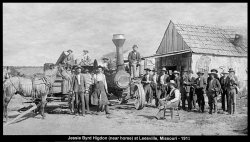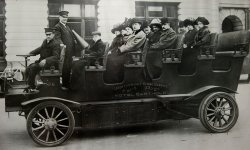
MAY CONTAIN NUTS

Search Shorpy
SHORPY ART

Framed or unframed, desk size to sofa size, printed by us in Arizona and Alabama since 2007. Explore now.
Join and Share
Ad-Free Shorpy
Shorpy is funded by you. Patreon contributors get an ad-free experience.
Learn more.

Recent comments
- Recent view
- Hudson’s Big Store
- Say what??
- Grapes?!
- A Beautiful Moment
- Such joy
- Bethune-Cookman University today...
- Yellow sky at morning
- Side Winder
- Air Quality?
- Sojourner Truth riot
- None were so blind(ed)
- The less famous sister
- Good ol' days?
- Rise and Fall
- Goo Goo Ga Joob
- Ticket Retention
- Not the only one
- Vagaries of War
- Killed by Amtrak
- Back to the Future
- Wanted --
- If you can't stand the light
- Centralized Traffic Control, I believe
- What's really happening
- Heckuva remote control!
- Sometimes — Things Go Bump!
- I SEE THE LIGHT
- Union Switch and Signal Company
- Get That Light Out Of My Eyes
Member Photos
The Shorpy
Print Emporium
Print Emporium
Search Shorpy
Search results -- 30 results per page
- Photo Finish: 1924
- ...
Full Name: Joseph Tarshes
Age: 18
Birth Year: 1912
Gender: Single (why they have gender listed as single is anyone's ... Posted by Dave - 04/24/2015 - 9:59am -
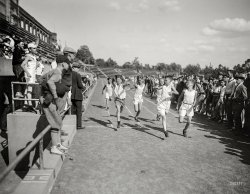
- Mrs. Slater, Miss Moore: 1916
- ... standard issue headgear for the Army and Marine Corps from 1912 until about 1940 (still worn by Army drill sergeants and USMC drill ... Posted by Dave - 08/27/2012 - 2:41pm -
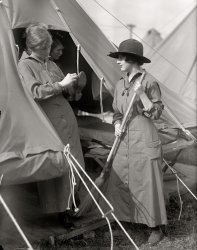
- Grain Train: 1939
- ... If so, the construction date would be somewhere around 1912. The M&StL was one of the early adopters of "dieselization," and the ... Posted by Dave - 12/22/2017 - 10:52am -
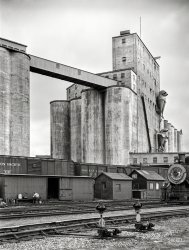
- Forbes Field: 1910
- ... lasted only four years as the official flag of the U.S. In 1912, with the admission of Arizona and New Mexico, it was time to upgrade to a ... Posted by Dave - 11/10/2018 - 10:00am -
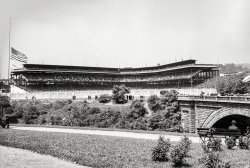
- Ahoy, Matey: 1921
- ... Sydney, Australia. In addition to passenger service, from 1912 Oceanic held a contract with the U.S. Government to ferry mail between the ... Posted by Dave - 04/14/2017 - 5:45pm -
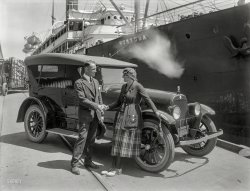
- Fancy Cakes: 1920
- ... no longer the Capitol's most opulent and trendy hotel. In 1912, the original Beaux Arts building (built in 1869) was demolished and it ... Posted by Dave - 12/01/2014 - 10:54am -
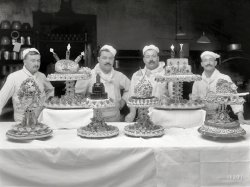
- Mme. Alda: 1909
- ... for export. During the late Meiji Period (1890s to 1912) much of this high-end embroidery, as well as silk tapestry panels with ... Posted by Dave - 08/09/2012 - 11:43am -
![Mme. Alda: 1909 "Alda relaxing at home." The soprano Frances Alda in 1909, a year before she married Metropolitan Opera manager Giulio Gatti-Casazza. She was said to have "a temper as red as her hair." George Grantham Bain Collection. View full size.
Stunning KimonoThis appears to be ceremonial kimono, probably for a wedding. Oh, to have color! Very fashionable in this period but rarely so ornate (or nearly as expensive). Any experts out there who can tell us more?
[Used as a dressing gown, it would be for ceremonial lounging. - Dave]
Kyoto Silk KimonoThe beautifully embroidered peacock-in-a-garden kimono resembles Japanese wedding kimonos in its luxury, but was probably made specifically for export. During the late Meiji Period (1890s to 1912) much of this high-end embroidery, as well as silk tapestry panels with similar garden scenes, was made in Kyoto to supply the Western demand for beautiful "Oriental" textiles. Pictorial arrangements of exotic birds and flowers like that on Mme. Alda's kimono were derived by the Kyoto designers from 18th Century Chinese scroll paintings. Many of these robes and textiles were sold by Japanese importers at the many world's fairs between 1893 (Chicago) and 1915 (San Francisco and San Diego).
The San Diego Museum of Art has in its collection a very similar "peacock" kimono that was presented in 1910 as a state gift to the wife of an American diplomat. Unlike Mme. Alda's kimono, which is of white satin, the SDMA example was embroidered on pink creped silk, and definitely was used by the diplomat's wife as an "At Home" lounging robe in social rituals such as receiving her female friends for afternoon tea.
(The Gallery, Dogs, G.G. Bain, Portraits)](https://www.shorpy.com/files/images/01670u.thumbnail.jpg)
- Fouquet House: 1904
- ...
Paul Smith Glens Falls Times, December 16, 1912:
"Paul Smith, Noted as Adirondack Guide, Dead."
Apollos 'Pol' ... Posted by Dave - 09/10/2018 - 9:33am -
![Fouquet House: 1904 1904. "Fouquet House and Delaware & Hudson R.R. station, Plattsburgh, N.Y." Panorama made from two 8x10 inch glass negatives. View full size.
Sans MansardThe Fouquet House lost its fancy roof and enclosed side porch, but the railroad station seems intact:
Just FouquetQ: "Get rid of the fancy roof and porch?"
A: [Thinks . . . and then says:] "Yeah, just Fouquet."
Razing the RoofThe building is selling condo apartments after extensive "modernization", upper floors and roof removed. One apartment retains the classic fireplace and mantel.
https://fouquethouse.plattsburghapts.com/gallery/
Paul SmithGlens Falls Times, December 16, 1912:
"Paul Smith, Noted as Adirondack Guide, Dead."
Apollos 'Pol' Smith made fortune in the Adirondacks.
There is also a hamlet called Paul Smiths.
(Panoramas, DPC, Railroads)](https://www.shorpy.com/files/images/SHORPY-Plattsburgh_Panorama_2.thumbnail.jpg)
- Ray Schalk: 1914
- ... almost his entire career with the Pale Hose, beginning in 1912; he played just 5 games for the New York Giants in 1929 before retiring. ... Posted by Dave - 03/07/2008 - 5:17pm -
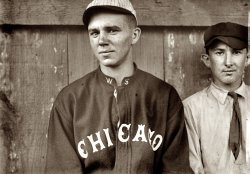
- Boston Art: 1906
- ... art The Museum was torn down in 1910 and replaced in 1912 by what is now the Fairmont Copley Plaza Hotel.Designed by the same ... Posted by Dave - 03/29/2016 - 12:40pm -
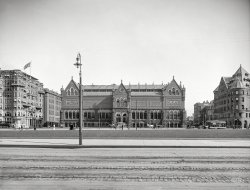
- Ramblin' Man: 1918
- ... but the last year I can find for carbide headlamps is 1912, and the side panel on the hood is apparently not original, not being ... Posted by Dave - 04/24/2016 - 3:53pm -
![Ramblin' Man: 1918 San Francisco circa 1918. "Studebaker." Well-used, with traveling cases marked "R.J.W." and "L.A." 5x7 glass negative by Christopher Helin. View full size.
What's that tank?What is that tank on the running board?
[A Prestolite acetylene gas tank for the headlights. - Dave]
The CarI own a 1913 Studebaker, and that does not look like a Studebaker to me. 1913 was the last year of right hand drive, at least in the USA, and only the smallest one of that year (Model 25) had Prestolite lighting system.
This car has left hand drive, Prestolite system and the cowl and radiator shell look unlike any year of Studebaker of that era.
Even if it does have hubcaps that say Studebaker, they may have been swapped out.
[The hubcaps are blank. The pointed door molding would seem to be something that Studebakers of the era have in common with this car. - Dave]
OK - The body is a 1914 Model SC, but it has been retrofitted with Prestolite Gas lights and has had the hood and radiator shell replaced by something else. Probably a real mess.
Also, Prestolite was not a carbide and water system, but an actual tank of acetylene gas. Carbide generators were messy and time consuming to keep up. The pressurized tank was easy by comparison, hence "Presto".
Early Cal Custom?Apparently a model SD; the body could be as early as 1914, but the last year I can find for carbide headlamps is 1912, and the side panel on the hood is apparently not original, not being louvred.
(The Gallery, Cars, Trucks, Buses, Chris Helin, San Francisco)](https://www.shorpy.com/files/images/SHORPY-956B.thumbnail.jpg)
- The Powers: 1905
- ... The earliest version of this film listed at IMDB is 1912. Two other versions were released in 1915 & 1916. That information ... Posted by Dave - 08/14/2012 - 11:53am -
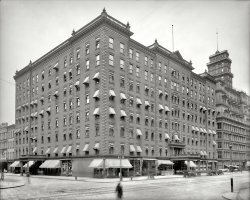
- Urban Equestrian: 1917
- ... married Harry Kendall Hickey, on May 7, 1931. Below is a 1912 photo of "Edith Howard" from the LOC. I'm not great at facial recognition ... Posted by Dave - 10/07/2012 - 2:28am -
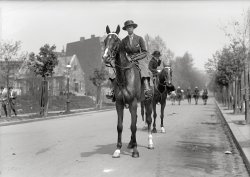
- Crosswise: 1902
- ... The photo of him below was taken from Mary Longley’s 1912 book “Nameless” which was dedicated to her husband who had become ... Posted by Dave - 10/18/2019 - 7:33pm -
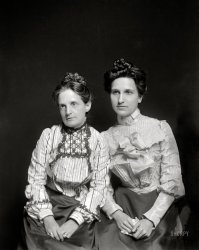
- George 'Knockout' Brown
- ... Brown (on right) and sparring partner, probably around 1912. View full size. George Grantham Bain Collection.
(The Gallery, ... Posted by Dave - 07/29/2012 - 6:57pm -
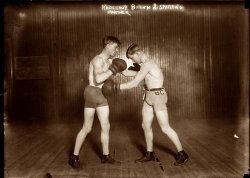
- The White Shadow: 1911
- ... our hero, Rudy Unholz
The Milwaukee Journal - Nov 4, 1912 Page 10
Rudy (or as he pronounced it Wo-o-o-ody) liked to talk up his ... Posted by Dave - 03/29/2016 - 8:31pm -
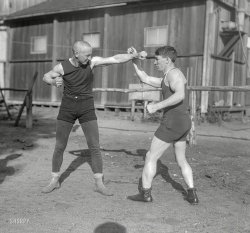
- The Birds: 1923
- ... It was his second marriage, his first wife having died in 1912. They divorced in 1934.
Eleanor announced Mary's engagement to Gerald ... Posted by Dave - 08/29/2014 - 4:39pm -
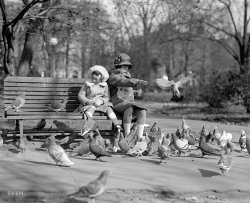
- Stingy Mille
- "Beggar, New York City." Circa 1912. View full size. George Grantham Bain Collection. Note cryptic ... Posted by Dave - 09/07/2011 - 8:26pm -
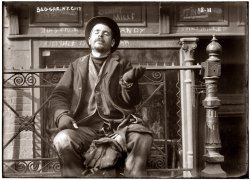
- Streetscape: 1923
- ... Victor Building Built in 1909, with an addition around 1912 that more than doubled the size. You can see distinctions in the facade: ... Posted by Dave - 09/03/2012 - 3:33pm -
![Streetscape: 1923 Washington, D.C., circa 1923. "Victor Building, Ninth Street N.W." National Photo Company Collection glass negative, Library of Congress. View full size.
Victor BuildingBuilt in 1909, with an addition around 1912 that more than doubled the size. You can see distinctions in the facade: the left half is the older bit. The shell of this building still stands, it recently underwent extensive renovations resulting in a modified outward appearance.
Access Hatches?Anybody know about those things that appear every 10' or so along the tracks? I'd guess they're metal access doors with an anti-skid type surface. What was under them? Why so many? Why the pairing of a big one and a little one? I assume that's a cable car track, and if that's true, then maybe those are where the cables guides were located and needed to be cleaned and greased? Can I ask any more questions in one post?
[These are electric streetcar tracks with the power supply in the slot between the rails. - Dave]
(The Gallery, D.C., Natl Photo)](https://www.shorpy.com/files/images/32386u.thumbnail.jpg)
- S.S. Olympic (Colorized): 1911
- ... have looked like whe she arrived in New York in April 1912. Very nice clear picture Shorpy!! I hope you enjoy this as much as me. ... Posted by richland1254 - 07/13/2012 - 10:32pm -
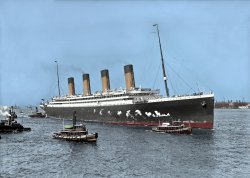
- Pvts. Weaver, Matthew and Wharton - Camp Borden, July 1916
- ... to an online family tree they had a daughter, Edna in 1912 and he died in 1966.
... Posted by Emma M. - 07/19/2009 - 5:27pm -
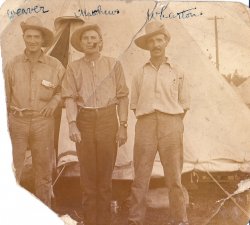
- Electric Sight-Seeing in N.Y.
- ... vehicle however.
The Hotel Bartholdi closed in May 1912.
I have one of these photos as well:
... Posted by roverdriver - 09/19/2011 - 11:33pm -
- Shoe Shine Boys
- ... Square. It seems to be 10:35 on a spring day, most likely 1912 or 1913. I developed this photo from his negatives. View full size.
... Posted by tempo dula - 12/13/2011 - 10:52am -
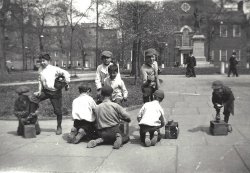
- The Westchester: 1937
- ... to the east. At the time of the railway's construction in 1912, the NYW & B was one of the most advanced systems in the world with ... Posted by nh-ep5 - 01/04/2013 - 7:47pm -
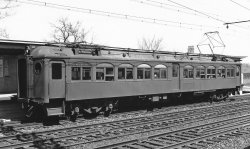
- Happy Birthday, Dad. Part II
- ... boy like myself to understand the lifestyle of a logger in 1912 Oregon or a quail hunter, but I find myself enjoying these very much.
... Posted by willc - 08/11/2009 - 8:16pm -
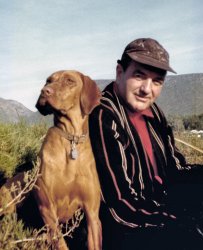
- Buffalo Christmas: 1917
- ... year is a guesstimate based on the birth dates of Hermann (1912, on the left) and Johanna (1911). They are enjoying their new toys under ... Posted by bhappel - 01/14/2019 - 1:31pm -
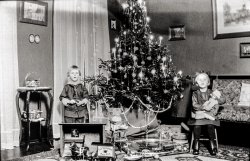
- Great-Great-Grandparents: 1888
- ... Schleswig, Germany on October 7, 1863 and died on June 24, 1912; she was buried in Kiel, Wisconsin. Fred Schubert was born in Lesohwitz ... Posted by schubert - 09/11/2015 - 6:43pm -

- Barefoot Boys
- ... Finn, my grandmother's brothers Myron and Donald circa 1912 in Denver. Photo by Arnold W. Wade.
(ShorpyBlog, Member Gallery) ... Posted by jlbussey - 05/05/2007 - 10:01pm -
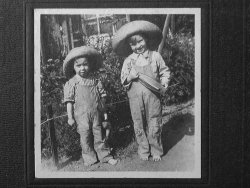
- Class photo
- ... Manhatten, New York City, taken probably between 1907 and 1912. View full size.
(ShorpyBlog, Member Gallery) ... Posted by robrwo - 09/26/2014 - 5:07am -
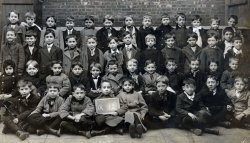
- Threshing Machine: 1911
- ... 1911. He and family moved to Eureka Springs, Arkansas in 1912 and then to Tulsa, Oklahoma in 1916, where they settled. Scanned from an ... Posted by Jim Carpenter - 03/03/2010 - 11:58pm -
